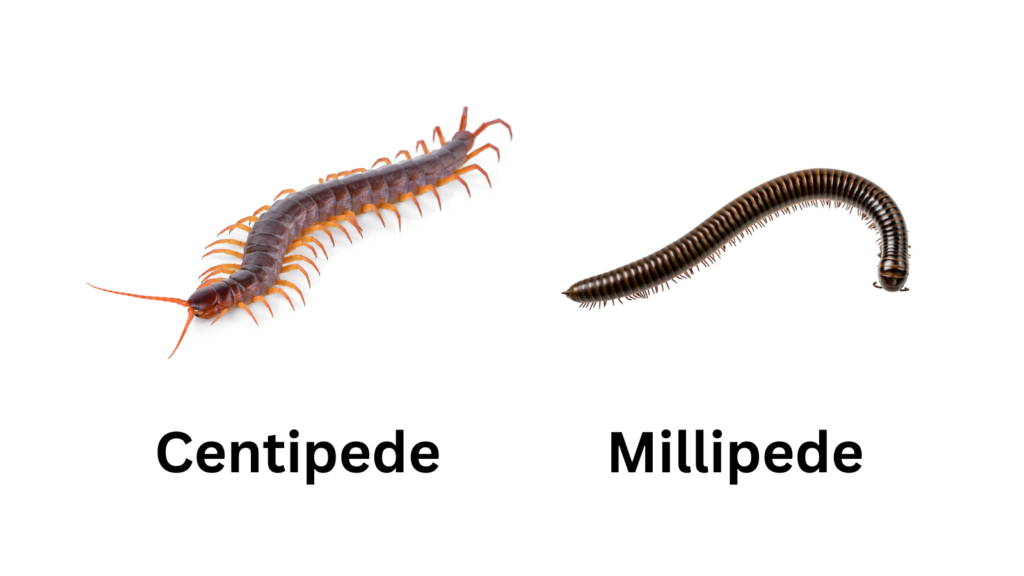
Centipedes and millipedes are both members of the phylum Arthropoda and the subphylum Myriapoda, meaning they are closely related, although these two types of creepy-crawlers do have some key differences. In this article, we’ll talk about the similarities between centipedes and millipedes, their differences, and how you can prevent them from infesting your home or building! If you are a New Orleans area home or business owner that is currently facing a problem with centipedes, millipedes, or any other type of pest, contact our team at Pied Piper Pest Control today for a free pest control and extermination estimate!
Centipede & Millipede Similarities
Centipedes and millipedes are often confused for each other because of the wide range of similarities they share:
- Centipedes and millipedes are both arthropods, NOT insects.
- Centipedes and millipedes both have segmented bodies, antennae, and many sets of legs, which makes them look very similar to the untrained eye.
- Centipedes and millipedes are both commonly found in moist, decaying organic matter like leaves, dead trees & branches, etc.
Centipede & Millipede Differences
When people think about the differences between centipedes and millipedes, the first thing that comes to mind is often the number of legs they have. There are thousands of different centipede and millipede species, each with different numbers of legs. The one commonality between every centipede species and every millipede species is that all centipedes have one set of legs per body segment, while millipedes have two sets of legs per body segment. This means that if you were looking at a centipede and a millipede with an equal number of body segments side-by-side, the millipede would have twice as many legs. Another key difference between these two types of arthropods is that a centipede’s legs stick out horizontally from their body, making the legs easy to see when looking at them from above. Conversely, millipedes have legs that are tucked underneath their body, making the legs difficult to see when viewed from above. One more difference between centipedes and millipedes is their diet: a centipede’s diet consists mostly of insects that they have killed with their venom, while millipedes mostly eat decomposing plants.
Preventing & Controlling Centipede & Millipede Infestations
Although there are many differences between centipedes and millipedes, you can prevent infestations from these bugs using a few basic precautions. The first thing you should do is inspect your home for any gaps or cracks in your foundation, walls, windows, and doors that could act as an entry point for centipedes, millipedes, and many other pests. If you find any potential entry points, you should seal them up using caulking, expanding foam, or something similar. The next way to prevent centipede and millipede infestations is to be vigilant about controlling the moisture levels inside your home and around its foundation. Centipedes and millipedes thrive in moisture, so it’s important to have proper ventilation and keep your eye out for any leaking pipes. One more way to prevent centipede and millipede problems is to stay on top of the landscaping around your home by cleaning up dead grass, leaves, and logs that these bugs might be attracted to!
Contact Pied Piper Pest Control!
If you have any questions about centipede or millipede infestations or are currently experiencing a pest problem at your home or business in the Greater New Orleans area, please don’t hesitate to contact our team at Pied Piper Pest Control! We provide a wide range of pest control & extermination services for insects, rodents, termites, and more to home & business owners throughout the New Orleans area! Contact us today to learn more by calling us at (504) 366-1333 or by filling out the contact form on our website!
